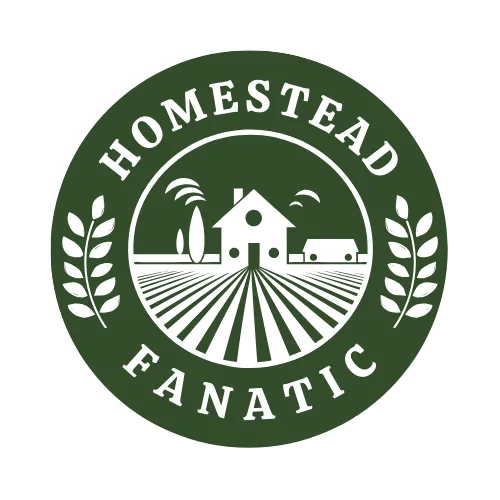
HOMESTEAD FANATIC BLOG
Discover amazing destinations, plan your perfect trip, and book unforgettable experiences. Our travel website makes traveling around the world easy, enjoyable, and hassle-free.
EXPLORE GREAT PLACES
THE HOMESTEAD BLOG

Small Acre Homestead Gardening: How to Get the Most from Your Land
Are you dreaming of cultivating a lush, productive garden on a small plot of land? Small acre homestead gardening is the art of maximizing every square foot to grow abundant produce, raise animals, and create a sustainable lifestyle. Whether you have one acre or even less, you can turn your homestead into a thriving oasis. Let’s dive into the essentials of making the most of your small acre homestead garden.
1. Plan Your Garden Layout Efficiently
The key to small acre homestead gardening is planning. Start by mapping out your land and identifying areas with optimal sunlight, drainage, and accessibility. Implementing techniques like square foot gardening or raised bed gardening can help you grow more in less space.
2. Prioritize High-Yield Crops
Choosing crops that provide the most yield per square foot is essential. Tomatoes, peppers, lettuce, beans, and herbs like basil and parsley are excellent options for small spaces. Prioritize perennial crops, like asparagus or rhubarb, to establish long-term productivity.
3. Companion Planting and Crop Rotation
Companion planting is a technique where certain plants grow better together. For example, planting basil alongside tomatoes enhances growth and repels pests. Additionally, practice crop rotation each season to maintain soil health and reduce disease.
4. Vertical Gardening: Reach for the Sky
When ground space is limited, think vertically! Use trellises, arbors, and hanging baskets to grow climbing plants like peas, cucumbers, and beans. Vertical gardening not only saves space but also improves air circulation, reducing the risk of disease.
5. Utilize Raised Beds and Containers
Raised beds and containers are perfect for small acre homesteads because they offer better control over soil quality and drainage. They also reduce the risk of weeds and make maintenance easier. Arrange them in a way that maximizes sunlight and accessibility.
6. Incorporate Permaculture Principles
Permaculture focuses on working with nature rather than against it. Integrate diverse plants, use mulch to retain moisture, and compost kitchen scraps to enrich the soil. Create microclimates with windbreaks or water features to optimize growing conditions.
7. Raise Small Livestock
If space allows, consider raising small livestock like chickens, rabbits, or bees. Chickens provide eggs, natural pest control, and manure for compost. Rabbits require little space and offer a rich source of fertilizer, while bees pollinate crops and produce honey.
8. Implement Water-Saving Techniques
Water conservation is crucial for small acre homestead gardening. Set up rainwater collection systems and use drip irrigation to target plant roots directly. Mulching around plants also helps retain moisture and prevent evaporation.
9. Extend the Growing Season
Maximize your harvest by extending the growing season. Use cold frames, row covers, or a greenhouse to protect plants from frost and create a warmer microclimate. Succession planting ensures you have a continuous harvest throughout the season.
10. Compost and Soil Health
Healthy soil is the foundation of a productive garden. Compost kitchen scraps, yard waste, and animal manure to enrich your soil naturally. Testing your soil periodically helps you adjust nutrients for optimal plant growth.
11. Practice Sustainable Pest Management
Avoid chemical pesticides by embracing natural pest control methods. Introduce beneficial insects like ladybugs, plant pest-repelling species like marigolds, and use physical barriers such as row covers or netting.
12. Create a Community and Share Knowledge
Homesteading is a journey best shared. Connect with local gardening groups, participate in seed swaps, or join online forums. Sharing experiences and learning from others can offer fresh perspectives and helpful tips.
Conclusion: Flourish on Your Small Acre
Small acre homestead gardening is a fulfilling way to live more sustainably while maximizing your land’s potential. With careful planning, efficient techniques, and a little creativity, you can cultivate a productive and beautiful homestead no matter the size. Ready to dig in and grow your small acre dream?
By applying these strategies, your small acre homestead will not only yield a bountiful harvest but also provide a deeper connection to the land and a sustainable lifestyle. Happy gardening!

POPULAR QUESTIONS
Asked Questions ?
Many people interested in homesteading ask about how to get started, what animals and crops are best for beginners, and ways to generate income from their land. Food preservation techniques are also a common topic, as self-sufficiency plays a key role in homesteading success. These FAQs provide a helpful starting point for anyone looking to embrace a more independent and sustainable lifestyle.
What is homesteading?
Homesteading is a lifestyle focused on self-sufficiency, which often includes growing your own food, raising livestock, preserving food, and using sustainable practices to reduce reliance on modern systems.
How do I start homesteading with little or no land?
Even if you don’t have a large property, you can start small by container gardening, keeping backyard chickens (if permitted), composting, and learning essential skills like food preservation and DIY projects.
What animals are best for a beginner homesteader?
Chickens, rabbits, and ducks are great starter livestock. They require less space, are relatively easy to care for, and provide eggs or meat while helping with pest control.
How can I make money from homesteading?
Many homesteaders generate income by selling eggs, honey, homemade goods, fresh produce, handmade crafts, or even offering homestead-related workshops.
What are the best crops for beginner homesteaders?
Easy-to-grow crops include tomatoes, zucchini, lettuce, radishes, and herbs like basil and mint. These require minimal maintenance and provide a great starting point for new homesteaders.
How do I preserve food for long-term storage?
Canning, dehydrating, freezing, and fermenting are all effective ways to preserve food. Each method has its benefits, depending on the type of food and your available storage space.

Your Gateway to Global Adventures Await Here.
Quick Links
Home
About Us
Services
Blog
Quick Links
Email:
